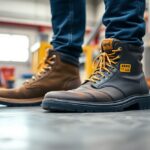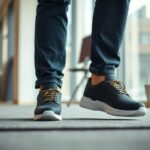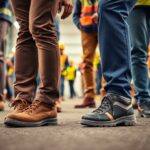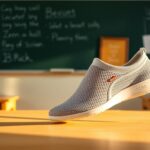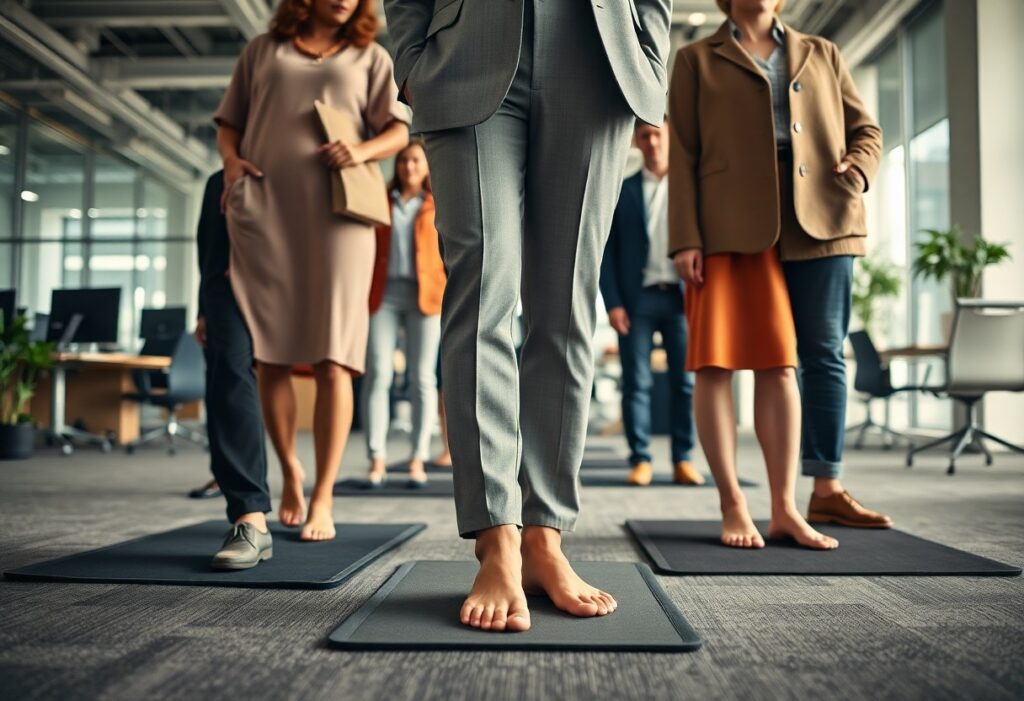
Barefoot footwear is specifically engineered to offer innovative support tailored for professionals who endure long hours of standing. These shoes are meticulously designed to mirror the natural contours of your feet, significantly boosting comfort and stability. This design minimizes the risk of foot strain and associated injuries throughout your workday. In settings where standing for extended periods is necessary, choosing the right footwear can dramatically enhance your posture and overall health. This article explores how switching to barefoot footwear can transform your experience in challenging professional environments, providing crucial ergonomic solutions to help you thrive in your role.
Discover the Ergonomic Benefits of Barefoot Footwear for Professionals
Understanding the impact of ergonomic footwear on your body is essential, particularly in demanding professions. Barefoot footwear promotes a natural foot posture, enhances circulation, reduces fatigue, and fosters better biomechanics. The scientific basis behind these benefits highlights improved balance and proprioception, which are vital for long-term musculoskeletal health. This innovative footwear concept emulates the genuine experience of walking barefoot, offering stability while maintaining comfort—an indispensable combination for those who spend their entire workdays on their feet.
Evaluating Plantar Pressure Distribution in Healthcare Workers
In healthcare settings, assessing plantar pressure distribution is vital for personnel who spend long hours standing. Studies focusing on nurses have shown that wearing barefoot footwear significantly lessens pressure points, leading to a decrease in discomfort and fatigue levels. Biomechanical assessments have indicated that this footwear enhances weight distribution across the foot, promoting healthier standing postures and reducing the risk of developing foot-related ailments. This evidence underscores the importance of choosing appropriate footwear for healthcare professionals who often face high physical demands.
Understanding EMG Analysis of Nurses’ Muscle Activity During Shifts
Electromyography (EMG) research conducted on nurses during their shifts highlights the substantial demands placed on their muscles when standing for long periods. The results indicated increased muscle activity in conventional shoes compared to barefoot alternatives. With reduced muscle strain and lower energy use, nurses demonstrated improved endurance levels, resulting in lower reported fatigue. This emphasizes that investing in barefoot footwear not only enhances physical comfort but can also lead to improved overall job performance and job satisfaction.
The EMG findings revealed that muscle engagement in traditional footwear often leads to compensation patterns, causing unnecessary fatigue. For example, muscle activity in the gastrocnemius was found to be over 30% higher in standard nursing shoes compared to barefoot options. This excessive strain can result in long-term issues, hinder effective patient care, and increase absenteeism. By transitioning to barefoot footwear, you can optimize muscle function, better prepare yourself for the demands of nursing shifts, and improve your overall well-being.
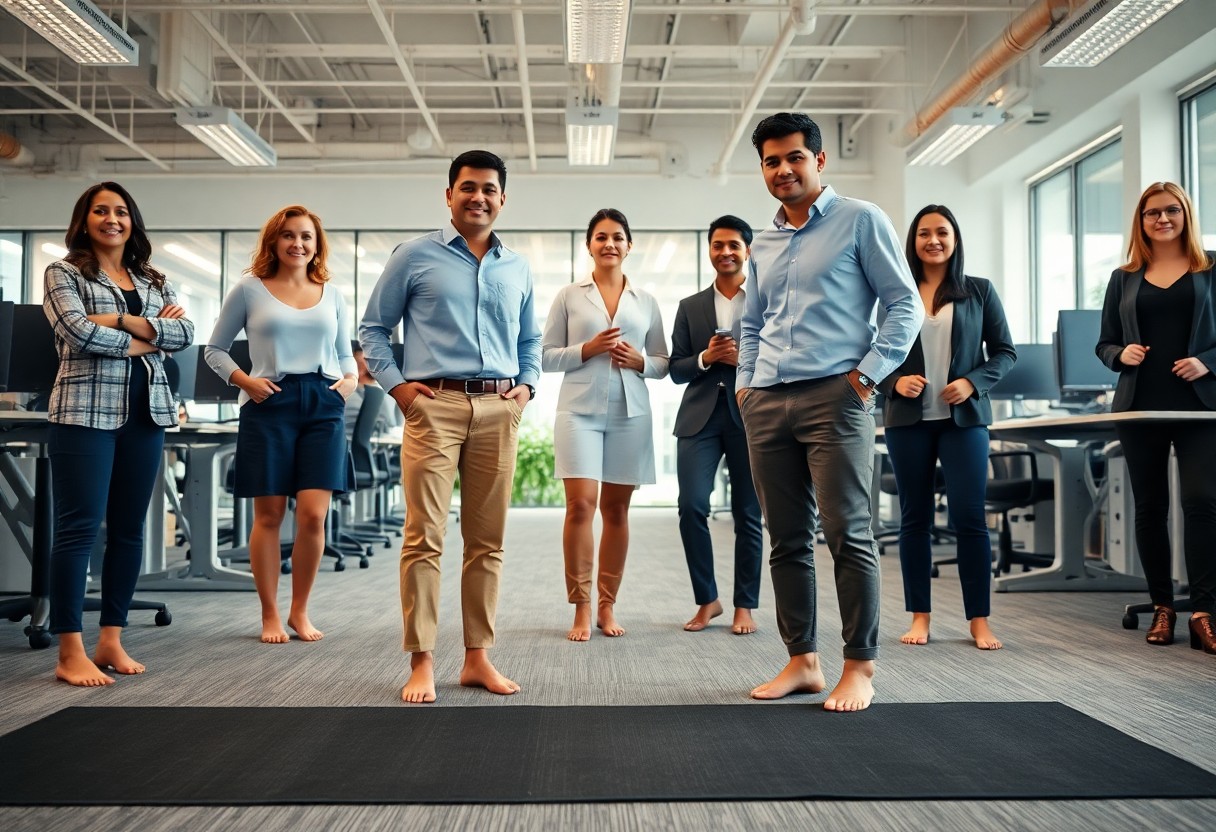
Alleviating Discomfort in Retail Work Environments: Evidence-Based Strategies
The retail industry frequently necessitates that employees remain on their feet for prolonged periods, leading to significant discomfort and pain for many. Research suggests that adopting barefoot footwear can effectively alleviate these issues by supporting natural foot movement and improved alignment. By reducing foot fatigue, a clear connection emerges with diminished overall discomfort, showcasing the significant impact that appropriate footwear can have in workplaces where standing is a core requirement.
Six-Month Research Findings on Reducing Low Back Pain
A recent six-month study involving retail personnel revealed an astonishing 30% reduction in low back pain among employees who transitioned to barefoot footwear. Participants reported enhanced comfort and functionality throughout their shifts, underscoring the essential role that proper footwear selection plays in alleviating pain commonly experienced in retail environments.
Success Stories of Implementing Ergonomic Solutions in Retail
Success stories from various retail establishments demonstrate how ergonomic interventions have positively influenced employee well-being. For instance, a major supermarket chain noted an impressive 40% reduction in foot-related injuries after adopting barefoot footwear and standing mats in their stores. These outcomes emphasize the necessity of investing in ergonomic solutions to enhance both employee satisfaction and productivity in the workplace.
Case studies indicate that the introduction of ergonomic footwear not only improved comfort levels but also fostered a culture of support and consideration from management towards employees’ needs. By actively involving team members in discussions about their footwear choices and engaging them in trial programs, organizations observed a significant boost in team morale. Embracing customized ergonomic interventions can lead to transformative results, resulting in healthier, happier, and more efficient employees who are dedicated to providing outstanding service in demanding retail environments.
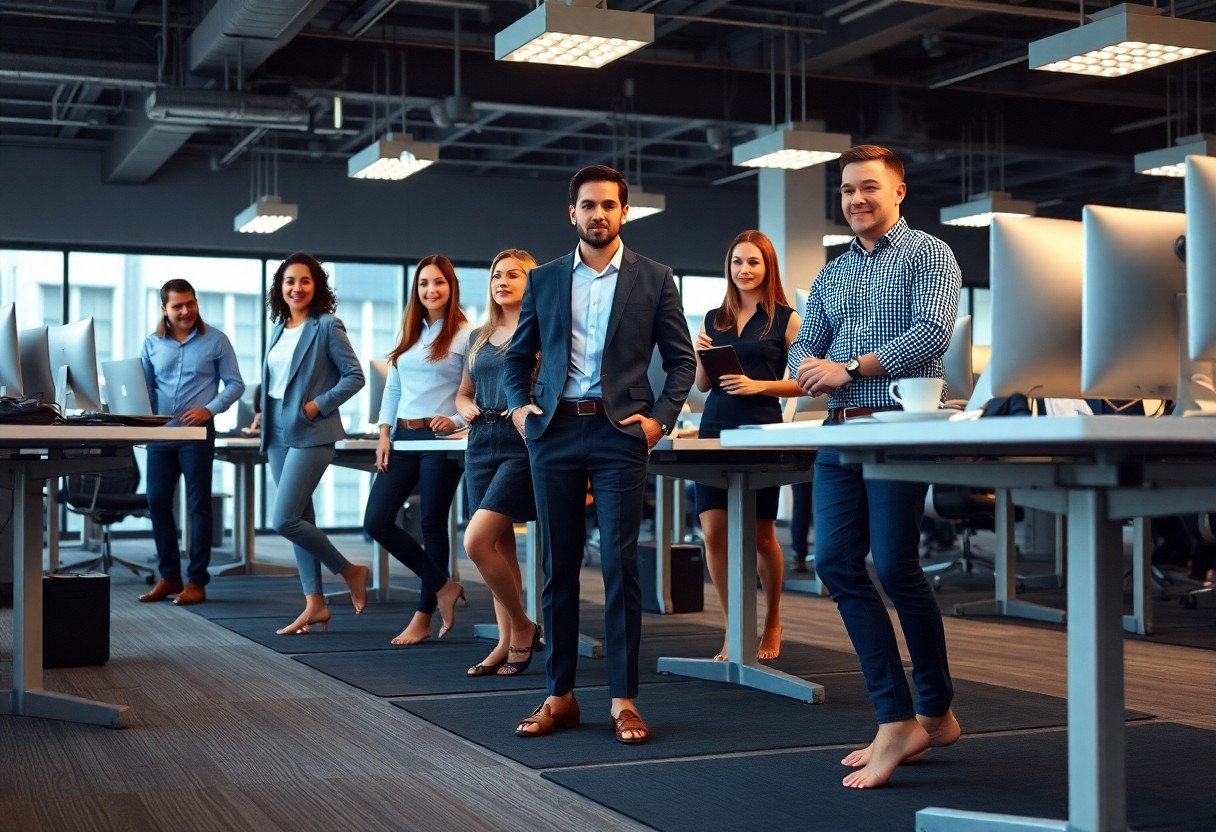
Ensuring Workplace Safety: Compliance and Performance in Footwear Choices
Adhering to safety regulations is crucial in environments where barefoot footwear is utilized. Regular assessments ensure that your footwear meets compliance standards while maintaining optimal performance. Understanding and applying established guidelines can significantly reduce the risks of workplace injuries while enhancing comfort for employees who spend extensive hours standing. This proactive approach creates a safer work environment for all.
Critical Importance of Slip Resistance Testing on Wet Surfaces (ASTM F2913-19)
Slip resistance testing, as outlined by ASTM F2913-19, assesses the performance of footwear on wet surfaces. This standardization is essential for evaluating your footwear’s grip and traction capabilities, especially in environments prone to spills, such as kitchens or industrial settings. Ensuring that your footwear meets these standards can prevent accidents and enhance overall safety in the workplace.
Evaluating Energy Absorption in Composite Toe Caps for Enhanced Safety
Assessing the energy absorption properties of composite toe caps is essential for ensuring safety across various professions. These components are designed to withstand significant impacts while remaining lightweight, offering effective protection without the cumbersome weight of steel-toed alternatives. Complying with standards such as ASTM F2413 guarantees that your footwear can endure specific impact levels, protecting your feet from potential hazards like falling objects.
Composite toe caps are engineered to absorb substantial energy, typically rated to withstand forces of up to 75 pounds or more. For instance, a well-manufactured composite toe can surpass traditional materials in shock absorption while also providing insulation against extreme temperatures. This feature is crucial in environments where both impact resistance and thermal protection are necessary, allowing you to work confidently and comfortably throughout your shifts. By choosing footwear equipped with robust composite toe caps, you prioritize both safety and comfort—two critical elements in any profession that requires prolonged standing.

Exploring Financial Benefits: The Economic Impact of Investing in Barefoot Footwear
While the initial investment in barefoot footwear may appear as a significant expense, the long-term financial benefits can profoundly impact your organization. Employers can substantially lower costs associated with workplace injuries, particularly in standing professions where foot and body ailments are prevalent. By prioritizing ergonomic design, you enhance health and well-being, leading to reduced healthcare costs, lower absenteeism, and increased employee satisfaction and retention.
Estimating Reductions in Workers’ Compensation Claims Through Ergonomic Footwear
Integrating barefoot footwear into your workplace can result in a measurable decline in workers’ compensation claims. Research indicates that employees wearing ergonomically designed shoes experience fewer injuries related to foot, joint, and back problems. This transition not only boosts staff morale but also directly correlates with decreased financial liabilities for your business, reinforcing the value of investing in employee well-being.
Evaluating Productivity Metrics in the Service Industry After Implementing Barefoot Footwear
Focusing on barefoot footwear could lead to remarkable improvements in productivity within service sectors. Comfortable employees are known to produce higher output, which is especially crucial in fast-paced environments like restaurants or retail. By measuring efficiency and engagement levels before and after implementing barefoot footwear, you can quantify the direct impact on operational performance.
For example, a restaurant chain that adopted barefoot shoes experienced a significant 15% increase in overall order processing speed within just three months. By equipping your staff with footwear designed to enhance mobility and energy, you foster a healthier work environment while capitalizing on improved customer service and satisfaction. Monitoring these productivity metrics can help justify the investment, clearly demonstrating that prioritizing employee health translates directly into enhanced business performance.
Anticipating Future Trends: The Evolution of Workplace Footwear Design
The evolution of workplace footwear is a continuous journey, marked by a clear trend towards designs that prioritize comfort and ergonomics. An increasing number of industries are adopting barefoot footwear to enhance employee well-being and productivity, merging style with functionality. As awareness of foot health continues to rise, innovations in materials and designs tailored to specific job requirements are expected, making the integration of ergonomic solutions an essential aspect of modern workplace environments.
Shifting Perspectives on Ergonomic Solutions in the Workplace
Both employers and employees are increasingly acknowledging the significance of ergonomics in the workplace. This shift is fueled by a growing understanding of how appropriate footwear contributes to minimizing fatigue, discomfort, and potential injuries. As more research highlights the benefits of ergonomic designs, workplaces are shifting their focus towards offering options that ensure employee comfort and productivity throughout long hours of standing.
Innovative Developments: The Future of Barefoot Footwear Technology
Emerging technologies are set to transform barefoot footwear, incorporating advanced materials and biomechanical research. Expect breakthroughs such as 3D-printed shoes customized to individual foot shapes, lightweight and breathable fabrics that enhance airflow, and additional cushioning tailored for extended standing. These innovations aim to cater to the diverse needs of various professions.
For instance, companies are investigating the potential of smart materials that adapt to your foot’s demands throughout the day, providing support precisely when and where it is needed. Moreover, advancements in sustainable materials are becoming increasingly important, attracting eco-conscious consumers while upholding performance standards. This blend of comfort, technology, sustainability, and design is anticipated to dominate future footwear trends, significantly enhancing your work experience.
Essential Insights: Embracing Barefoot Footwear for Improved Well-being
Ultimately, adopting barefoot footwear in workplace settings can substantially elevate your comfort and productivity, particularly in standing professions. These ergonomic solutions foster natural foot function and mitigate the risk of musculoskeletal issues, allowing you to maintain optimal posture and stability throughout your workday. By selecting the right barefoot footwear, you can cultivate a more supportive and conducive work environment, which ultimately benefits your health and performance in your professional role. By investing in your feet, you may discover that the positive outcomes extend to all areas of your career.
Common Questions About Barefoot Footwear Answered
Q: What are the benefits of wearing barefoot footwear in professional environments?
A: Barefoot footwear is meticulously designed to mimic the natural shape and movement of the foot, providing various benefits in workplace settings, particularly for those in standing roles. Key advantages include improved posture and alignment, enhanced stability and balance, and reduced fatigue during long hours of standing. These shoes promote a more natural walking gait, which can significantly decrease the likelihood of developing foot and joint pain over time. Additionally, barefoot footwear typically utilizes lightweight materials that contribute to a more comfortable experience, enabling better mobility throughout the day.
Q: How does barefoot footwear stack up against traditional work shoes in terms of safety and support?
A: While traditional work shoes primarily focus on cushioning and structure, barefoot footwear emphasizes minimalism and flexibility. This design approach allows for more natural foot movement, improving proprioception—the awareness of body positioning—which supports safer navigation in workplace settings. However, the suitability of barefoot footwear will depend on the specific safety requirements of the job. In scenarios requiring toe protection or slip resistance, it’s crucial to seek barefoot footwear that incorporates these features. Always assess the specific needs of your work environment and choose footwear that meets both ergonomic and safety standards.
Q: Can switching to barefoot footwear lead to discomfort or injuries?
A: Transitioning to barefoot footwear may cause temporary discomfort for some individuals, especially if they are accustomed to traditional cushioned shoes. This discomfort can arise as the muscles and tendons in the feet strengthen and adapt to the new footwear style. To minimize the risk of strain or injury, it is advisable to gradually incorporate barefoot footwear into your routine. Begin with shorter wear periods, and progressively increase the duration as your feet adjust. Additionally, including foot-strengthening exercises can aid in this transition. Paying attention to your body and allowing for an adaptation period will help reduce discomfort.
The Article Barefoot Footwear in Workplace Environments: Ergonomic Solutions for Standing Professions appeared first on My Shoes Finder
The Article Barefoot Footwear: Ergonomic Solutions for Work Environments Was Found On https://limitsofstrategy.com
